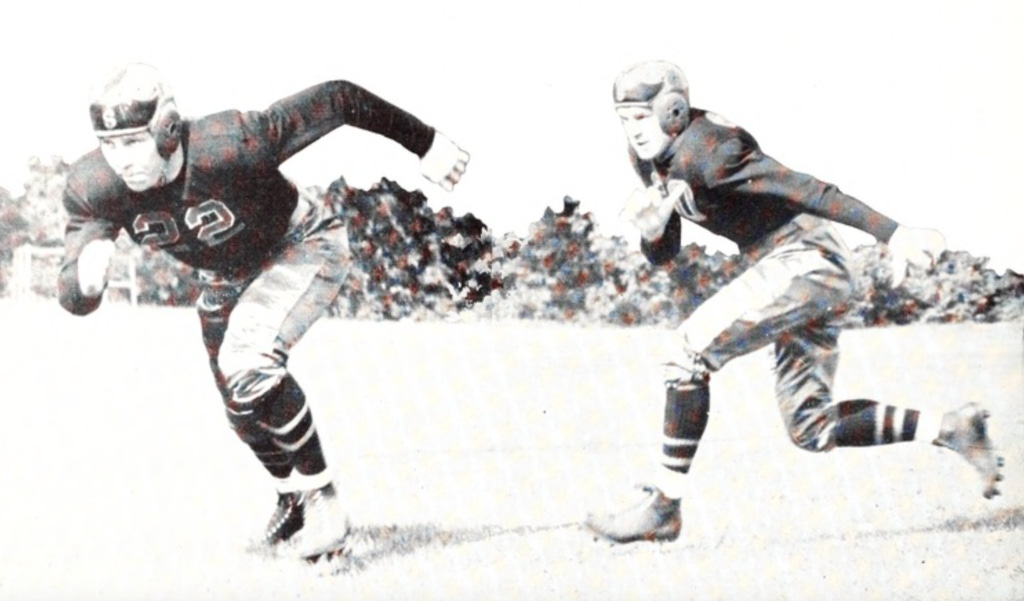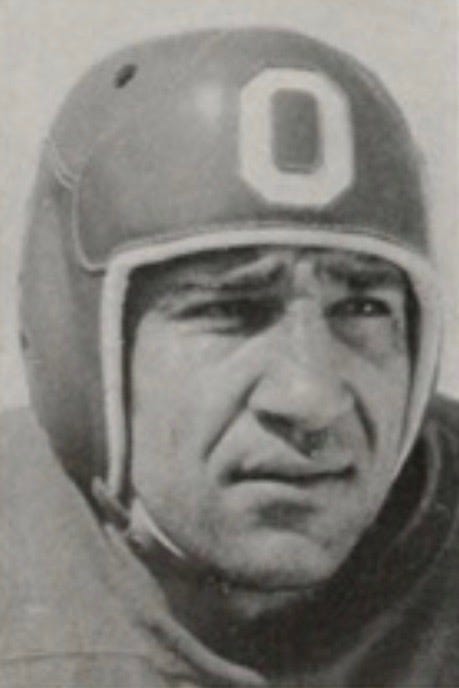Football's First Helmet Logos
Several recent posts have covered aspects of football history discovered during a review of 2,000+ old college yearbooks. One post showed Texas invented the whiteout in 1920. Another included the only known image of a puntout being executed, while a third showed the field conditions of old were rather wretched.
Just as the world forgot about Texas' 1920s whiteouts when Penn State revived them (borrowing from hockey fans in Calgary), the same applies to the origins of helmet logos. The Los Angeles Rams are widely credited with being the first team to paint logos on their helmets in 1948. The story goes that Fred Gehrke, a Rams running back and art major at Utah, spiced things up by painting rams horns on a helmet. After showing the helmet to the team owner and winning approval for its use, Gehrke painted horns on all the team's helmets and the rest, as I wrote elsewhere, is art history.

Of course, the historical record changes with new information, which is the case with helmet logos.
Old yearbook pictures show that Amos Alonzo Stagg and the University of Chicago Maroons painted their wishbone C emblem on the back of their helmets a quarter of a century before the Rams bore their horns. Images from the 1921 and 1922 seasons, when Chicago played a typical Big Nine schedule and a home-and-home series with Princeton, clearly show the emblems on their helmets.

It is unclear why Chicago abandoned their painted logo or why other schools did not add logos in the 1920s. Some teams did not adopt logos because they tried to deceive their opponents by wearing arm pads, stickum pads on their jerseys, and helmets matching the football color. Doing so made it more difficult for defenders to determine which offensive player had the ball. Some runners even tossed their helmets on the ground, so would-be tacklers might think the helmet was a fumbled ball.
The old trick helmet ploy became more difficult following a 1930 NCAA rule requiring helmets to have "at least two stripes of markedly contrasting color at least two inches in width." The need for the helmet stripes made it difficult to find a good spot for a logo, but the introduction of the winged helmet the same year provided new opportunities. First worn by Ohio State in 1930, a handful of schools, including Indiana, Purdue, and Michigan State, soon carved a letter (e.g., an I, P, or S) into the padded wings on the helmet front.

The original logos were too small to be seen by fans in the stands, but the logos grew larger as the years went on. Oklahoma, for example, had a substantial logo on their helmets in the late 1930s.

The opportunity for the expanded use of logos came with eliminating the helmet stripe rule and reintroducing plastic helmets after WWII. But Gehrke and the Rams' real innovation -using a pictogram rather than a letter- that opened the door to the varied logos that now populate football fields everywhere. Today, only a small percentage of teams choose not to incorporate a logo on their helmet, while most teams that use logos have used multiple variations over the years.
So, what's the deal with the University of Chicago's logo today? The Chicago "C" was adapted by the Chicago Bears when they added a helmet logo in 1956. Chicago, which reinstated football in 1969, now uses the same white wishbone C on maroon helmets they used in 1921, though the logo now rests on either side of the helmet rather than the back.
Football Archaeology is reader-supported. Click here to buy one of my books or otherwise support the site.

